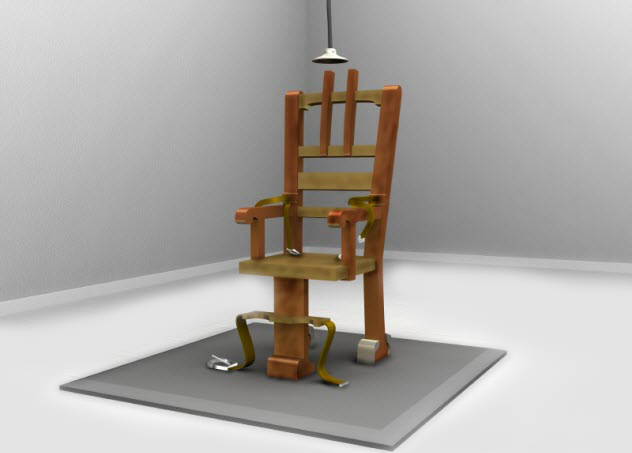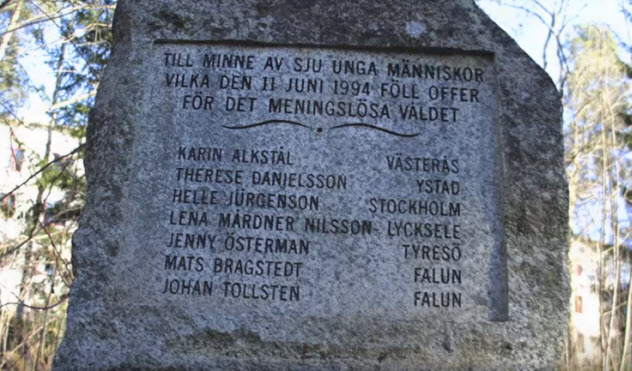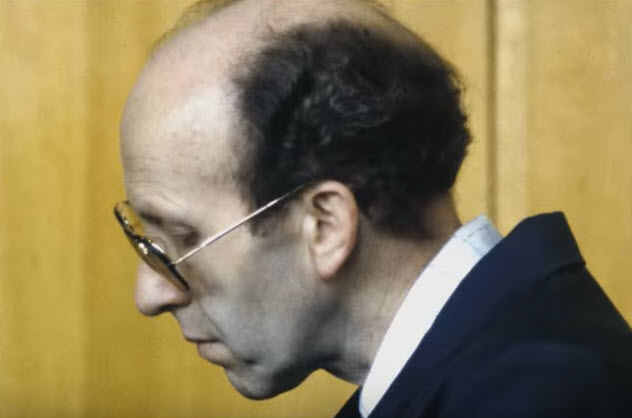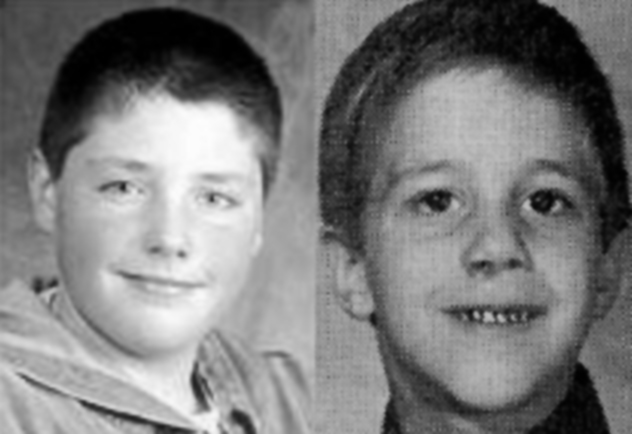 Technology
Technology  Technology
Technology  Humans
Humans 10 Everyday Human Behaviors That Are Actually Survival Instincts
 Animals
Animals 10 Animals That Humiliated and Harmed Historical Leaders
 History
History 10 Most Influential Protests in Modern History
 Creepy
Creepy 10 More Representations of Death from Myth, Legend, and Folktale
 Technology
Technology 10 Scientific Breakthroughs of 2025 That’ll Change Everything
 Our World
Our World 10 Ways Icelandic Culture Makes Other Countries Look Boring
 Misconceptions
Misconceptions 10 Common Misconceptions About the Victorian Era
 Mysteries
Mysteries 10 Strange Unexplained Mysteries of 2025
 Miscellaneous
Miscellaneous 10 of History’s Most Bell-Ringing Finishing Moves
 Technology
Technology Top 10 Everyday Tech Buzzwords That Hide a Darker Past
 Humans
Humans 10 Everyday Human Behaviors That Are Actually Survival Instincts
 Animals
Animals 10 Animals That Humiliated and Harmed Historical Leaders
Who's Behind Listverse?

Jamie Frater
Head Editor
Jamie founded Listverse due to an insatiable desire to share fascinating, obscure, and bizarre facts. He has been a guest speaker on numerous national radio and television stations and is a five time published author.
More About Us History
History 10 Most Influential Protests in Modern History
 Creepy
Creepy 10 More Representations of Death from Myth, Legend, and Folktale
 Technology
Technology 10 Scientific Breakthroughs of 2025 That’ll Change Everything
 Our World
Our World 10 Ways Icelandic Culture Makes Other Countries Look Boring
 Misconceptions
Misconceptions 10 Common Misconceptions About the Victorian Era
 Mysteries
Mysteries 10 Strange Unexplained Mysteries of 2025
 Miscellaneous
Miscellaneous 10 of History’s Most Bell-Ringing Finishing Moves
10 Terrible Multiple Murderers Who Were Released From Prison
Many people would argue that if you murder someone, you have bought yourself a one-way ticket to prison for the rest of your life. After all, murder is perhaps the worst crime that one human can commit against another.
Despite this, some people kill multiple times—whether through mass murders, spree killings, or serial slayings. A handful of these multiple murderers were jailed but given the chance to reenter society later.
10 Mika Kalevi Muranen

On April 17, 1994, 23-year-old Mika Kalevi Muranen, a conscript with the Finnish army, returned to the barracks after a holiday. Instead of resuming duty, Muranen stole an assault rifle and traveled to his hometown, Kotka.
There, he retrieved his crossbow from his family’s home. Still dressed in his army uniform, Muranen made his way to his target, two middle-aged neighbors with whom he’d been feuding.
Muranen shot the couple with his crossbow and killed them both. His next victim was a mailman, whom he shot to death with the assault rifle. After the killings, Muranen tried to escape into the woods with his dog. As he fled, Muranen and the police shot at each other. The dog was caught in the cross fire and died.
Muranen was able to hide for less than a day before he was shot in the shoulder by police and taken into custody. He was convicted of three counts of murder, eight counts of attempted murder, and three counts of attempted manslaughter.
Although Muranen was given a life sentence, he was paroled in September 2014 after serving 20 years in prison. He had trained as a lumberjack in prison and said that he just wanted to live a normal life on the outside.
9 Juha Veikko Valjakkala

Juha Veikko Valjakkala, 22, was released from prison in Turku, Finland, in May 1988. He and his 22-year-old girlfriend, Marita Routalampi, drifted throughout Sweden and Finland, eventually landing in the town of Amsele, Sweden, on July 3.
In the middle of the night, Valjakkala stole a bike from the Nilsson family. Sten Nilsson saw the theft, so he and his 15-year-old son, Fredrik, chased after Valjakkala.
The thief led them to a cemetery where he aimed a shotgun at the father and son. Valjakkala had them get on their knees and beg for their lives. As they did, he executed the father and then the son.
Ewa, Sten’s wife and Fredrik’s mother, went out to look for her family and came across Valjakkala and Routalampi. Ewa tried to take the gun away from Valjakkala, they scuffled, and she attempted to flee.
But Valjakkala hit her in the back of the head with the rifle and then stabbed her to death. After the triple homicide, Valjakkala and Routalampi fled. They were arrested just over a week later in Denmark.
At their trial, the couple blamed each other for the murders. The courts believed Routalampi’s version of the events, and she was given two years. Valjakkala was given a life sentence. A psychiatrist examined the couple and diagnosed Valjakkala with a psychopathic personality with high aggression.
While in prison, Valjakkala continued to cause problems. In 1991, he tried to escape and failed. In 1994, he was able to escape after he took a teacher hostage. He was captured a short time later.
He also married repeatedly during his stay in prison and changed his name twice. First, it was Nikita Fouganthine, and now he is known as Nikita Bergenstrom. Valjakkala started to receive day parole in 2001. On one occasion, he didn’t return. By 2009, he was released from prison. In 2012, he was arrested again, this time for arson and assault.
Again, he was granted day parole in 2014. In November 2015, he left prison and never returned. As of March 2016, his whereabouts are unknown.
8 Wai-Chiu ‘Tony’ Ng
The Wah Mee Social Club was an illegal gambling ring that was housed in a basement in Seattle’s Chinatown. In the early morning hours of February 19, 1984, Wai-Chiu “Tony” Ng, Benjamin Ng (no relation), and Kwan Fai “Willie” Mak entered the club and hog-tied the 14 people who were inside. After robbing the club, they shot each person in the head and left. Amazingly, one person survived the shooting and identified the three shooters.
After the massacre, the worst in Washington’s history, Tony Ng fled to Canada. He was arrested a short time later and extradited to Washington. He claimed that he was forced to take part in the robbery because Mak had threatened his family. He admitted that he had carried a gun and was involved in the robbery, but he claimed that he hadn’t shot anyone.
In the end, Tony Ng was found guilty of 13 counts of first-degree armed robbery and second-degree assault with a deadly weapon. He was sentenced to 30 years in prison. Tony Ng applied for parole five times. It was finally granted in 2013 on the condition that he’d return to China. He agreed and was deported upon his release.
Mak and Benjamin Ng, the other two men involved in the robbery, were convicted of murder. Mak was given the death sentence, which was later changed to a life sentence. Benjamin Ng is also serving a life sentence.
7 Roger Warren

In May 1992, about 200 workers walked off the job at the Giant Mine in Yellowknife, Northwest Territories. The workers didn’t want to take a pay cut, and they had some safety concerns.
Shortly after the strike began, Royal Oak Mines, the company that owned the mine, brought in new workers. By September 1992, tempers were frayed and the dispute was getting volatile.
On September 18, just before 9:00 AM, a cart carrying nine miners hit a trip wire that caused a violent explosion. All nine men were killed instantly. Six of the men were miners who had crossed the picket line, and the other three were replacement workers.
After a 13-month investigation, 49-year-old miner Roger Warren confessed to the bombing. At his trial in 1995, he recanted his confession but was convicted nevertheless. He received a life sentence. In 2003, he admitted again that he had rigged the bomb.
In 2014, Warren was granted day parole because he was not considered a risk. When he found out about the parole, 70-year-old Warren apologized for all the pain that he had caused.
6 Raymond Goedecke

On August 15, 1964, Raymond Goedecke, a pre-divinity student, returned from an overnight Lutheran camp about 80 kilometers (50 mi) north of his family’s home in Chula Vista, California. Inside the home were the dead bodies of his family—his parents, Henry and Joan, his 15-year-old sister, Ellen, and his eight-year-old brother, Mark.
Henry had been beaten with a steel rod and stabbed 20 times. The rest of the family had been bludgeoned to death. When the police arrived, Raymond greeted them with a casual “hi.”
As the only member of the family to survive the massacre, Raymond was one of the first suspects. After police confronted him with a palm print and a bloody shirt as evidence, Raymond confessed to the murders.
He said that he and his father had argued over his grades. He left the camp in the middle of the night, drove to his family’s home, and murdered them. After massacring his family, he drove back to the camp and ate breakfast. Then he returned to his home and pretended to discover the bodies.
On December 8, 1964, Raymond was convicted of first-degree murder, but the Supreme Court of California reduced the charges to second-degree murder. In 1975, Raymond was released from prison on parole.
After being granted parole, Raymond became a suspect in another murder but was ultimately discharged from parole in July 1984. Raymond worked as a self-employed landscaper and died at age 48 in July 1994.
5 Palle Sorensen
By September 1965, 38-year-old Palle Sorensen from Amager, Denmark, had a long criminal history of petty crimes and robberies. He had also served a total of 11 years in prison.
At about 3:00 AM on September 18, Sorensen and his 47-year-old friend Norman Lee Bune were returning home from a series of robberies with a carful of stolen goods. The police attempted to pull them over, but Sorensen wouldn’t stop.
When he couldn’t get away, he ended up shooting four police officers to death. Three of them were 24 years old, and the last one was 28. After running out of ammunition, Sorensen turned himself in at the town’s police station.
He confessed to the crimes and was given a life sentence on March 18, 1966. In Denmark, a life sentence is usually about 12 or 13 years. But Sorensen spent 33 years in prison. In 1998, at age 71, he was pardoned and released from prison.
The case forever changed policing in Denmark. After the spree murder, police were required to be armed while on duty.
4 Raymond Eugene Brown

On the morning of October 2, 1960, Emma Lou Brown of Ashland, Alabama, went next door to the home where her sister, mother, and grandmother lived. Inside, she made a shocking discovery: The house was splattered with blood.
The police were summoned and found the lifeless bodies of her 31-year-old sister, Bertha Mae Martin, her 63-year-old mother, Ethel Ogle, and her 82-year-old grandmother, Everlena Ogle. They had been stabbed, and their throats had been slashed. There were also signs of overkill; Bertha Mae had suffered 123 knife wounds.
A bloody footprint at the house was traced to Emma Lou’s 14-year-old son, Raymond Eugene Brown. During an interrogation, Brown admitted that he had wanted a pair of football shoes and entered his relatives’ house in the middle of the night to steal money.
His aunt heard him and went to investigate. To silence her, he grabbed a butcher knife and slaughtered her. Then he decided to kill the other two women to eliminate any possible witnesses.
Brown was found guilty and given a life sentence without the possibility of parole for 10 years. In 1973, he was paroled. But he was arrested in 1980 for raping and strangling his landlord. Luckily, she survived. Brown was sent back to prison.
He was paroled again in 1986. Afterward, he started a relationship with 32-year-old Linda LeMonte. She had a six-year-old daughter, Sheila Smoke. At some point, the relationship ended and Brown wasn’t happy about it.
On August 10, 1987, LeMonte’s six-year-old son and his grandmother discovered the bodies of LeMonte and her daughter. They had been stabbed to death in their home in Montgomery, Alabama.
After a massive manhunt, Brown surrendered on August 12. This time, Brown was given a death sentence for the double murder.
3 Mattias Flink

One of the most notorious mass shootings in Sweden’s history took place in Falun on June 11, 1994. On that night, 24-year-old Mattias Flink, a soldier in the Swedish army, was drinking and arguing with his girlfriend. He left the bar, went home, and changed into his uniform. Then he went to his regiment and got an assault rifle and 150 rounds of ammo.
Now armed, Flink went to the park in the center of town and opened fire on six women who were army volunteers returning to their posts after a discharge party. Four of the women died at the scene, and a fifth died in the hospital.
Shortly afterward, Flink murdered two men and injured two more people. All the victims were between the ages of 20 and 35. Shortly after the shootings began, two police officers came across Flink, who fired shots at them. They returned fire and hit him in the leg.
He was arrested and originally given a life sentence. But that was eventually changed to a 30-year sentence. In May 2007, Flink started getting prison leaves. He was released on parole on June 11, 2014—20 years to the day of the shooting—which appalled the families of the victims.
Upon his release, Flink said that he had a moral duty not to drink anymore.
2 Arnfinn Nesset

In November 1980, a reporter from a newspaper in Trondheim, Norway, learned that there were a large number of deaths at a local nursing home. When she investigated, she found that 46-year-old Arnfinn Nesset, the manager of the home, had ordered a large amount of the muscle relaxant curacit. The drug is a derivative of curare, a poison once used by South American natives who dipped their arrows in it.
Nesset said that he originally bought curacit to kill his dog. During a police interrogation, he also admitted to killing 25 patients with the drug between May 1977 and November 1980. At the start of his trial, Nesset pled guilty but changed his mind during the proceedings. He claimed that he had made a false confession under duress during the police interrogation.
At that time, the trial was the longest in Norway’s history. Nesset was found guilty of 22 murders and given the maximum sentence of 21 years in prison. He was released in 2004 and went to work at the Salvation Army.
The true number of Nesset’s victims is unknown and could be as high as 138. If so, that would make him one of the most prolific serial killers in Scandinavian history.
1 Mitchell Johnson And Andrew Golden

On the morning of March 24, 1998, Mitchell Johnson, 13, and Andrew Golden, 11, stole the car of Johnson’s parents and went to his grandparents’ house. After stealing an arsenal of unlocked firearms there, they drove to their school, Westside Middle School in Jonesboro, Arkansas.
The boys pulled the fire alarm and hid in some bushes outside the school. Once the students had filed out of the school, Johnson and Golden started shooting at them with high-powered rifles.
They killed four female students and 32-year-old English teacher Shannon Wright. The teacher died while trying to shield students. Johnson and Golden injured nine more students and another teacher. At the time, the tragedy was tied for the deadliest US school shooting.
Both boys were arrested and confessed to the crime. Due to their ages, they were charged as juveniles and given shorter sentences. As a result, Johnson was released when he turned 21 in August 2005. Two years later, Golden was released on his 21st birthday after serving nine years.
As of March 2016, they are the only living school shooters who are free today.
Robert Grimminck is a Canadian freelance writer. You can friend him on Facebook, follow him on Twitter or on Pinterest, or visit his website.








